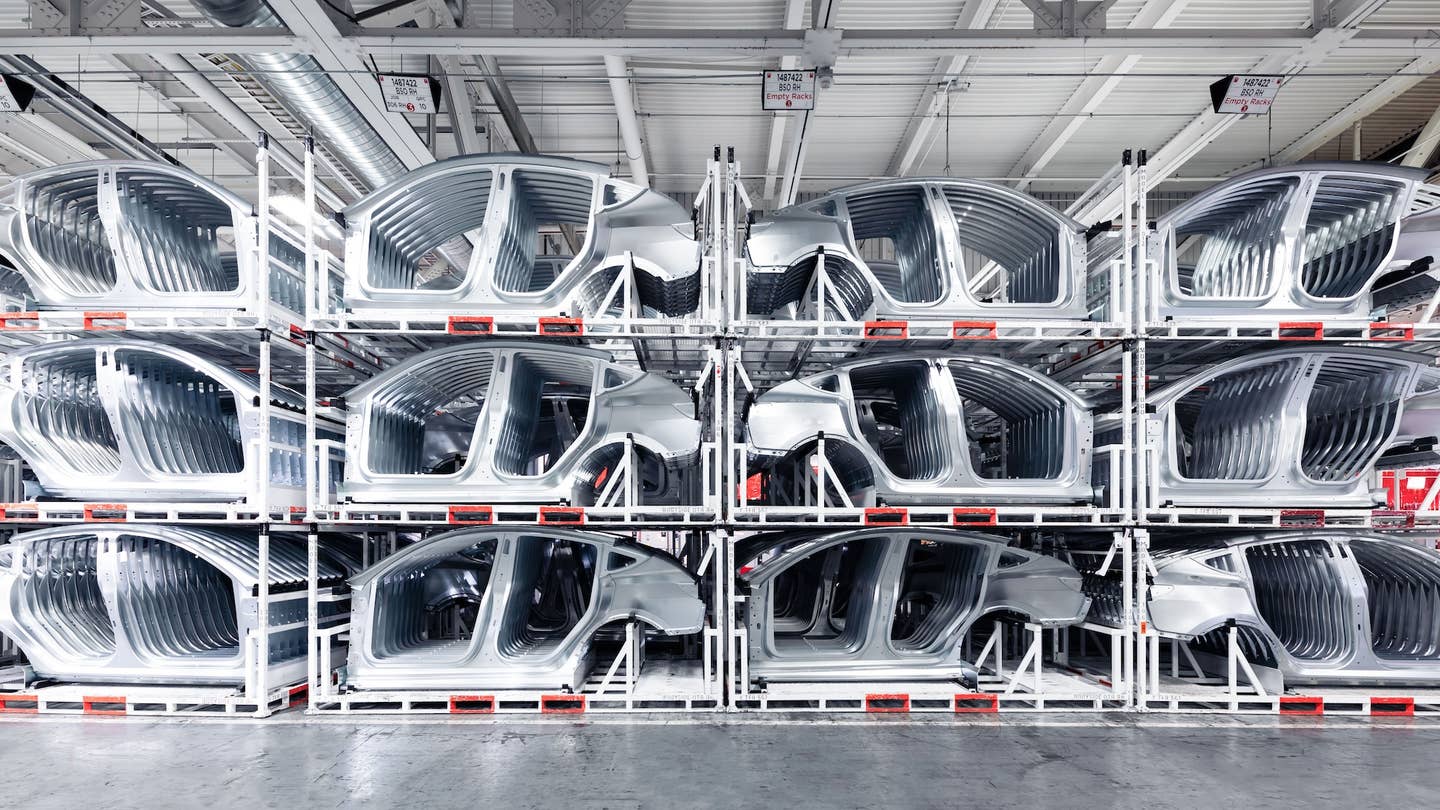Tesla’s plan to cast entire chassis was supposed to revolutionize carmaking, but now the company’s reportedly lost faith in the tech.

One of the technologies that’s supposed to sustain Tesla’s lead for the next generation of electric vehicles is the novel new production method of “gigacasting.” It’s expected to make producing car bodies faster, simpler, and above all, cheaper. But that doesn’t seem to be panning out perfectly, as Tesla is reportedly abandoning its plans to cast cars’ entire underbodies.
Tesla assembly line in Texas. Tesla
Speaking to “two sources familiar with the matter,” Reuters reports Tesla has abandoned plans to cast complete floorpans for future vehicles. Instead, it’ll continue using the method pioneered for the Model Y (and continued in the Cybertruck), which uses cast front and rear subframes bridged by a conventional battery enclosure. Tesla reportedly wanted to negate the risk of delays associated with the unproven production method, which has already led to alarming quality problems at smaller scale on existing models.
Tesla paint booth in Texas. Tesla
Tesla’s scaled-back casting ambitions are significant because this discards one of the struggling automaker’s supposed trump cards. The company now has an aging lineup with no sign of replacement and driving automation technologies that have fallen far behind the competition. Sales are falling accordingly, which has led to multiple waves of layoffs this year. Musk also openly worries about competition from China, which sells EVs at a fraction the price Tesla can.
Tesla is currently putting all its eggs in the frail basket of a self-driving taxi, despite the company’s autonomy tech receiving poor safety ratings from the IIHS. The past decade has shown it’s a fool’s errand to declare any given moment marks the end for Tesla, but it’s also hard to remember any time Tesla’s future has looked so dire.
Got a tip or question for the author? You can reach them here: james@thedrive.com


